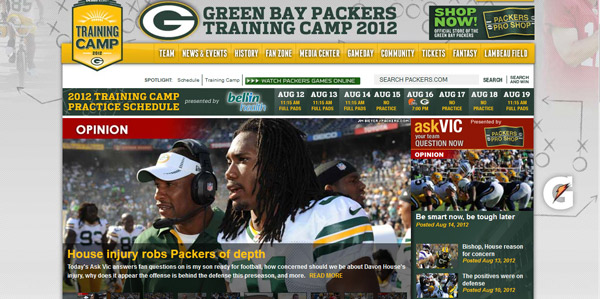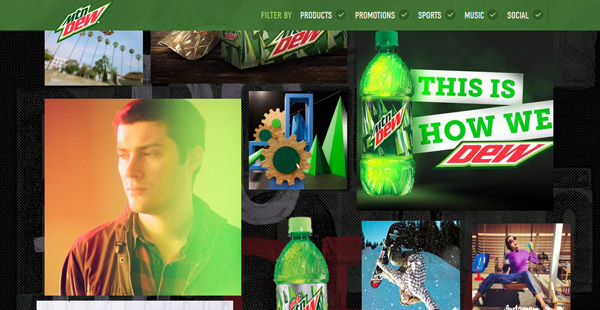Going Green: Color Connects with Nature
We all dream in color. Every design concept and sketch comes with some sort of color association. But what do those colors mean? What associations are we making just with that choice alone?
Green is strongly associated with nature – green grass, green (or eco) friendly.
Here we take a look at green – meanings, color pairings and sites that are doing it well. While green is most strong associated with nature, it has other meanings as well. Green hues are tied to health, growth, freshness, money and safety. Green, in general, is extremely pleasing to the eye and can increase a person’s sense of restfulness or calm.
Shades of Green
Silverback
Green Infrastructure Inc

dConstruct 2010
With Postcards Email Builder you can create and edit email templates online without any coding skills! Includes more than 100 components to help you create custom emails templates faster than ever before.
Free Email BuilderFree Email TemplatesGreen is one of the most natural, and neutral, colors you can use in a design project. The color has very negative associations (unless it takes on a yellowish tone) and is appealing to the eye because of its wavelength on the light spectrum.
Green is used by companies looking to form a visual bond with nature, to promote wellness or health or safety, military applications and money and finance. While the color is often linked to stability, it can be associated with inexperience. (Think of the terms “being green” or “greenhorn.”)
The darkest shades of green tend to have masculine associations, whereas lighter, most pastel tones are linked to feminine qualities. But you must be careful when using multiple shades of green, a fairly high number of men claim red/green colorblindness and may have trouble distinguishing different hues.
Dark green: Darker shades of green are most-commonly associated with money, especially in the United States where currency is printed on green paper. The tie to money has led dark green to also connect to greed, envy and ambition.
Bright green: The brightest green hues are hopeful and safe. The color also represents stability and endurance though it’s connection to nature. Bright greens are often seen as the color for plants and in marketing for eco-friendly packaging and products.
Yellow-green: The more yellowish green the hue, the less positive the associations tend to be. Yellow-greens are often thought to represent illness or discord. Others tie to shade to jealousy.
Olive green: Olive greens are also representative of nature. The color also represents peace (think about the phrase “extend an olive branch”). Here you get dual representations – olive branches are a naturally-growing plant containing a color that is linked to peace.
Cultural Considerations

With Startup App and Slides App you can build unlimited websites using the online website editor which includes ready-made designed and coded elements, templates and themes.
Try Startup App Try Slides AppOther ProductsWhile green is often linked to money in the United States, it is also linked to advancement. Traffic lights turn green, for example, when it is time to get moving again and projects that are approved are “green lighted.”
In England, the color is associated with the tale of Robin Hood and is considered heroic.
Green has spiritual meanings in Islamic and Japanese cultures. In Islam, it is a sacred color and sign of respect; in Japan, it is the color of eternal life.
On the other hand, in North Africa green represents corruption.
Color Wheel and Pairing
Green is a secondary color on the color wheel, meaning it is made by combining two primary colors. Green is formed by mixing yellow and blue. Even more shades can be created with the additions of white or black.
You can use the color wheel to create color schemes of multiple hues that can create a sense of harmony or chaos. Create a scheme using three side-by-side colors for an analogous scheme – yellow-green, green and aqua. A complementary scheme pairs green and magenta or fuchsia (opposites on the wheel), while natural schemes can match green, yellow and blue because each color appears in nature.
Famous Brand Associations
Kermit the Frog helped make the color famous in the song “It’s Not Easy Being Green.” But some brands have proven just the opposite.
Many famous brands are linked to the color through a variety of imagery and their logos – beer brands Heineken and Rolling Rock, tax preparer H&R Block, the Greenpeace ecological group, The Masters golf tournament and the Green Bay Packers of the NFL all rely on the color.
Other well-known associations with green include national militaries (many of the uniforms are green), the Green Party political group and even the nation of Libya, which has a solid green national flag.
Heineken
Greenpeace
Green Bay Packers
Mountain Dew
Doing It Well

Daguia: The background screams mint pie and is emphasized by the single leaf on top. It almost feels healthy and indulgent.
EMOTIONS by Mike

Emotions by Mike: The green shading on this site just makes it inviting. The colors are fun, fresh and make you want to find out more about Mike’s work.
Schneider Garten
Schneider: The green leaves on the neutral backdrop are a perfect fit with the garden imagery on this site. The designer is putting a simple focus on nature.
Versions

Versions: Here green is used with blue and yellow to create a very natural color scheme.














